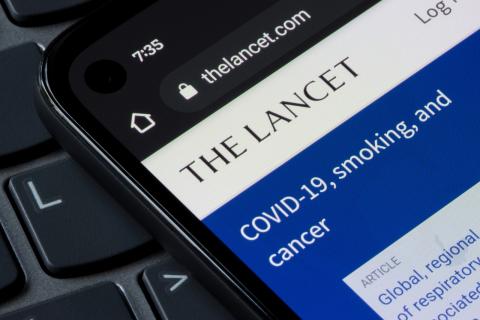●The headline
The headline of a paper seeks to state its main message as precisely and succinctly as possible; that of a news item must inform truthfully, but also draw the reader. This difference in objectives, coupled with the fact that the two texts are aimed at different audiences, means that their headlines are generally very different.
The paper introducing the cloned sheep Dolly was entitled: Viable offspring derived from fetal and adult mammalian cells (I. Wilmut et al, 1997).
This was the headline of the article in The New York Times: SCIENTIST REPORTS FIRST CLONING EVER OF ADULT MAMMAL.
The headline of the paper does not mention that it is the first adult mammal cloned: its audience already knows that - this is obvious, otherwise it would not be a paper in Nature. Instead, it adds that the clone is derived from foetal and adult cells, and that it is viable. For readers of a generalist outlet these extra facts will only add to the confusion. A news story calls for a cleaner, clearer message, a sentence where less is more (less information, but more impact).
● The start
Scientific publications usually start with an abstract summarizing their content; in news stories, a first paragraph tells the gist, the most important message. The main thing for the authors of the finding and for the general public does not always coincide, and even when it does, the start of a paper and that of a news story are different. The abstract is not only —again— more precise and technical, but its structure usually reproduces a ‘mini-story’ in which some basic data are used to reach a conclusion (the novelty that is to be told). In a news article, however, what is new is already in the first sentence.
The first sentence of the journalist Gina Kolata in The New York Times is: “In a feat that may be the one bit of genetic engineering that has been anticipated and dreaded more than any other, researchers in Britain are reporting that they have cloned an adult mammal for the first time.”
The abstract, in contrast, begins: “Fertilization of mammalian eggs is followed by successive cell divisions and progressive differentiation, first into the early embryo and subsequently into all of the cell types that make up the adult animal.” You have to get to the eighth line to read: “We now report the birth of live lambs from three new cell populations established from adult mammary gland, fetus and embryo.”
●The structure
Over and above the beginning, the structure of the two texts is also different. In the news story, the most important information is told as soon as possible; it is a piece of writing designed to be cut at the bottom if necessary, or for a time-poor reader who reads as far as he or she can. The paper lays the groundwork for the story, develops it and, finally, explains the outcome in the conclusions: the most important information comes at the end.
Journalists use an inverted pyramid structure in which the most important things are at the top, the so-called ‘5Ws’: Who, what, when, where, why—.
● Graphic support
In journalistic pieces, graphic support —photos, infographics, videos— is fundamental. In addition to being informative, it must be one of the elements that make the news attractive. Very often it is what will first draw the reader’s attention to the piece.
● Diversity of sources
In a paper, the results are presented by the members of the research team that developed the study in question. A peer-reviewed paper has passed through the eyes of several referees before being published in the scientific journal, and references are made to previous scientific literature related to the study, but the only voices in the text are those of the signatories. In contrast, in a news or feature story on that study, the journalist may include voices from sources other than the co-authors of the paper. This is important to check the relevance of the information with independent sources and to put it in context: no study is an isolated truth, but rather a sentence within the larger conversation that is science.




